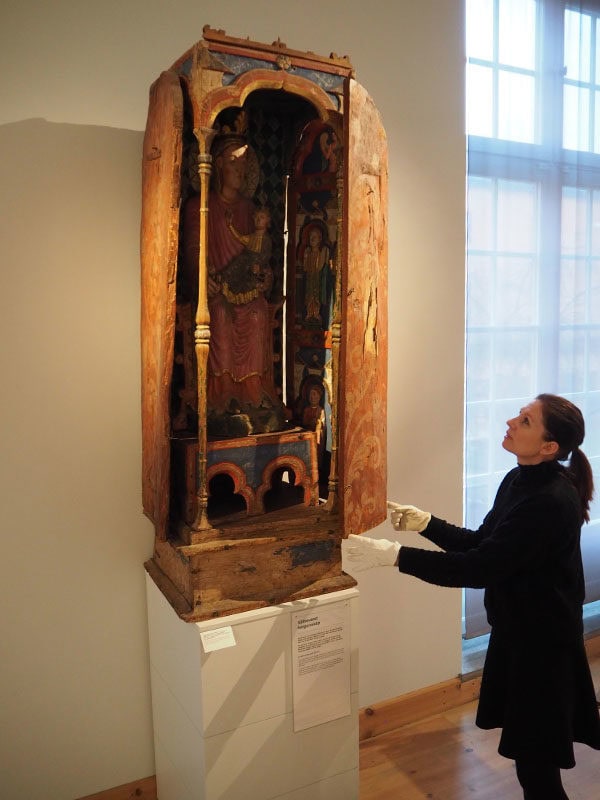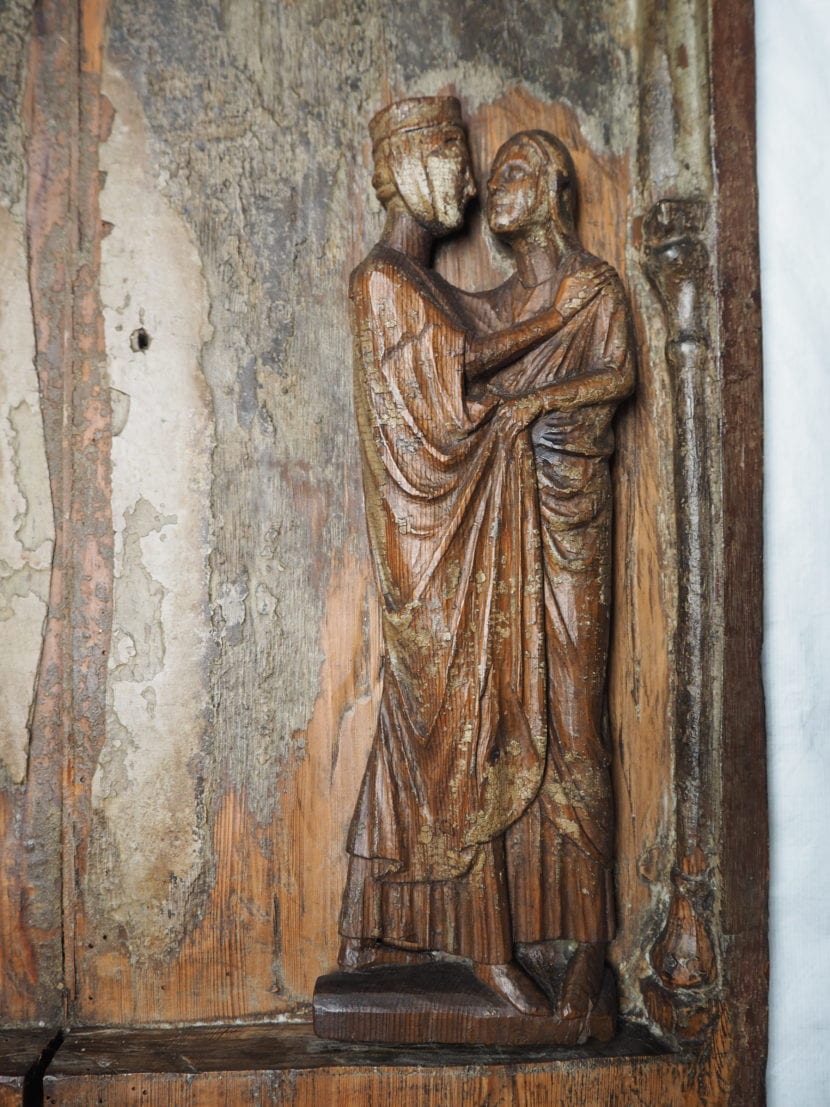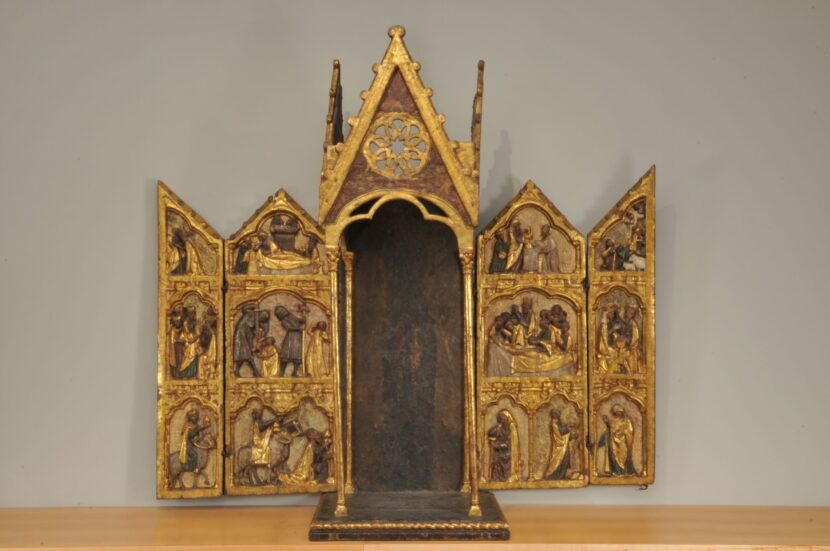
Madonna Tabernacles in Europe c. 1150-c. 1350
The earliest preserved group of wooden tabernacles dates from c. 1150 – c. 1350. Today, they are often fragmented, reconstructed and overpainted. There are however at least 29 extant Madonna Tabernacles in Europe, with one or more wings preserved; 17 in Scandinavia and at least nine from Spain and two in Italy, all from this period.
A Madonna Tabernacle is a three-dimensional construction, embellished with brilliant color and movable wings, with a figure of the Virgin and Child placed inside. In open position the Madonna figure is revealed, with the Incarnation story painted, carved or a combination in the niches on the Tabernacle’s wings. In museums when exhibited, or when reproduced in print, it is almost always the interior of these Tabernacles that are displayed or illustrated.
In this project Elisabeth Andersen from NIKU will explore the Tabernacles in closed position; i.e the exterior of the preserved wings. What decoration do we find on the exterior? Can a closer examination of the exterior of these Tabernacles provide more understanding of their function, effects and later development?
In June 2019 NIKU co-host the international symposium «The Saint Enshrined: European Tabernacle-altarpiece (c.1150-1400)» in Valladolid, Spain. Members of the cientific committee: Fernando Gutiérrez Baños, Universidad de Valladolid; Justin Kroesen, Universitetsmuseet i Bergen; Elisabeth Andersen, Norsk institutt for kulturminneforskning.
At this symposium Elisabeth Andersens paper «Closing the Tabernacle. European Madonna Tabernacles c.1150-1350» will be presented.
Project leader: Elisabeth Andersen – Publications from this project
- Status Under arbeid
- Finansiert av NIKU
- Tidsperiode 2019-



